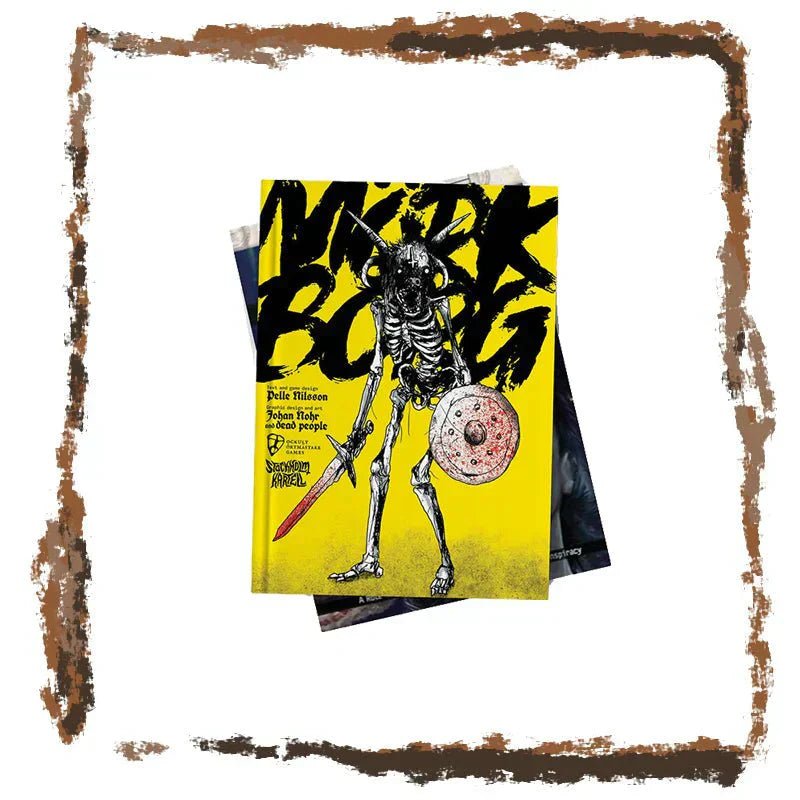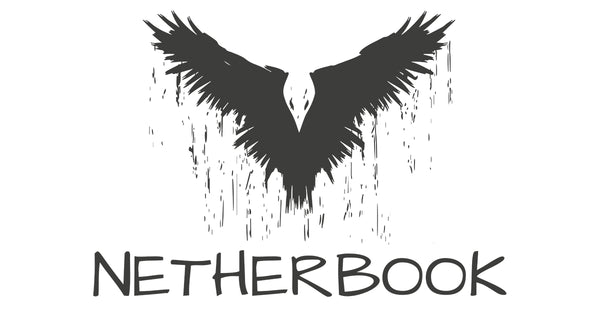
Mörk Borg RPG recensie - Duister, regels-licht en brute fantasie
Mörk Borg is het indie RPG-equivalent van een onweersbui die over een afbrokkelende kathedraal rolt. Het is luid, stijlvol, kent geen regels en is absoluut niet geïnteresseerd in beleefdheid. Bij Netherbook zijn we dol op die energie. Dit is een game die precies weet wat hij wil zijn: een doom metal fantasy RPG waarin de wereld vergaat, de voortekenen slecht zijn en jij niet de held bent... maar toch gaat.
Wat is Mörk Borg?
Mörk Borg is een apocalyptische tabletop RPG uit Zweden met weinig regels en veel grafische elementen. Denk aan een combinatie van black metal-albumhoezen en OSR (Old School Revival)-inzichten. Het boek is kort, krachtig, waanzinnig visueel en ontworpen om je binnen enkele minuten aan het spelen te krijgen. Het creëren van personages gaat snel, de gevechten zijn bruut, de uitrusting is onbetrouwbaar en de wereld om je heen rot actief weg. Het is geen glimmende high fantasy. Het is roest, botten, heiligen met kwade bedoelingen en een zon die morgen misschien niet opkomt.
Waarom het opvalt
- Lichte regels, snel te spelen: Je kunt Mörk Borg in minder dan 10 minuten leren. Dat maakt het perfect voor one-shots, con-plays of late night sessies wanneer iedereen te moe is voor 5e-boekhouding.
- Esthetiek als gamedesign: de lay-out is wild, maar niet willekeurig. Het boek zelf inspireert tot avonturen. Elke pagina ziet eruit als een poster. Dit is zo'n RPG die je het liefst op tafel in je gamekamer of winkel laat liggen.
- Gemaakt voor brutale fantasy: de dood is mogelijk, de gevolgen zijn reëel en de toon is schaamteloos grimmig. Als je groep van dark fantasy of OSR dungeon crawls houdt, ben je hier op je plek.
- Uitbreidbaar als een malle: de community rond Mörk Borg is een van de meest creatieve in de scene. Er zijn zines, mini-avonturen, klassen, items en generatoren. Perfect voor spelleiders die graag hacken en publiceren.
Welk soort spelers zullen dit leuk vinden?
- Groepen die van donkere, tragische en overdreven fantasy houden.
- GMs die graag improviseren en geen 12 pagina's aan NPC-achtergrondinformatie willen voorbereiden.
- Spelers die het niet erg vinden als een personage sterft, omdat het maken van een nieuwe gedoemde klootzak maar 2 minuten duurt.
- Liefhebbers van metal-, horror- en vreemde kunstboeken.
Wat je eigenlijk doet in Mörk Borg
Je kruipt door kerkers, kathedralen, door pest geteisterde dorpen en vergeten graven terwijl de wereld aftelt naar zijn eigen einde. De setting wordt aangestuurd door profetieën die 'Miseries' worden genoemd. Als er genoeg 'Miseries' gebeuren, is het spel voorbij. Letterlijk. Het is een campagnetimer die is gebouwd
Voordelen
- Verbluffende en unieke artistieke richting
- Snel te leren, snel te rennen
- Tal van ondersteuning van derden
- Perfect voor one-shots, festivals en winkeldemo-avonden
- Geweldig voor spelers die graag het gevaar voelen
Nadelen
- Niet voor groepen die een heroïsche machtsfantasie willen
- De lay-out kan overweldigend zijn voor mensen die gewend zijn aan traditionele regelboeken
- Zeer specifieke toon. Als je tafel warme, gezellige fantasie nodig heeft, is dit niet de juiste keuze.
Ons oordeel
Mörk Borg is een van die moderne RPG's die je eraan herinnert waarom indiegames belangrijk zijn. Het is gedurfd, het is vreemd, het is prachtig en het maakt dat je meteen een sessie wilt spelen. Voor winkeleigenaren is het een magneet voor de schappen. Voor spelmanagers is het een motor voor creativiteit. Voor spelers herinnert het eraan dat fantasy lelijk, luidruchtig en memorabel kan zijn.
Als je groep dol is op D&D 5e, maar soms iets korter, bloederiger en sfeervoller wil, voeg dan Mörk Borg toe aan je collectie. Als je een verzamelaar bent van prachtige RPG-boeken, heb je deze echt nodig.
